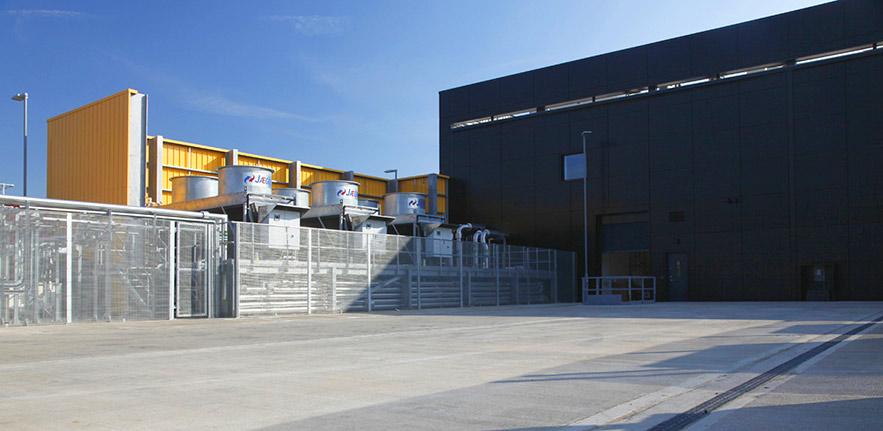
Information Services strives to reduce the energy required to power the shared computing resources it provides to the University – from the enabling infrastructure, right down to our managed desktop workstations.
West Cambridge Data Centre – low power, low carbon
Typically, 30-40% of the inherent costs of running a data centre are due to the power requirements. Data centres are increasingly becoming a major source of carbon emissions, with some experts predicting that their environmental impact will soon eclipse that of the airline industry. That's why the University was keen to ensure that its new £20M West Cambridge Data Centre would not be contributing to the problem.
In designing our industry-leading facility, enormous effort went into inventing an innovative way of sustainably providing the energy required to power the machines in the 4 data halls, as well as to find a highly efficient way of cooling them. Our innovative hybrid 'chilled water' cooling system delivers the same benefits of evaporative cooling, but without the use of chillers.
To support the high density cabinets for the High Performance Computing Service, a back-of-rack cooling solution was adopted. Working with local supplier, Coldlogik, the University has been able to experiment to determine the optimum system settings to deliver the highest efficiency levels. Even the three UPSs are designed to deliver 98% power efficiency.
Once fully operational, the West Cambridge Data Centre is expected to deliver an overall PUE (Power Usage Efficiency) of 1.2, which is not far off that of large global players like Google (1.11 average for Q2 2014) and Facebook (1.06 and 1.08 averages for its two data centres, May 2013), who have made significant investments in their green data centres.
As a result of the power efficiency measures taken, we expect to see a 10% reduction in carbon emissions from the new machine rooms in the data centre compared to the previous levels from the ageing, disparate machine rooms it replaces.
Virtualising machines to reduce power consumption
Physical hardware requires a constant source of energy to power the spinning hard discs. With the large number of servers under our control, this can account for a lot of unnecessary energy use. That's why UIS is developing a growing program of machine virtualisation wherever possible.
Scheduling the shut-down of machines wherever practical
All desktop machines managed by UIS – the Manged Cluster Service (MCS), ISS desktop and UAS desktop – are scheduled to shut down automatically at the end of the day in order to save energy.
